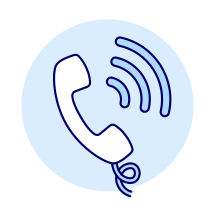April 28, 2022
1. DONT Use Social Sharing Buttons on Product Pages
There is anecdotal evidence from various companies who have performed A/B testing on their sites with social sharing buttons on and off their product pages. They found that there was an 11.9 percent increase in conversions on pages where there were no social sharing buttons. Why? It comes down to human psychology, basically, if none of your friends like it, chances are you won't either.
Instead, DO put social sharing buttons on the sales confirmation page.
This one pro tip will help you increase sales and conversions, and have more happy customers. Key things to remember: great descriptions, high-quality images and videos, clear calls to action, personalized experiences, positive social proof, and keep the social sharing buttons off the product pages.
2. DONT Use Negative Social Proof
Remember all those times your parents asked you if you'd jump off a bridge because your friends were doing it? Well according to social proof, you probably would have. In fact, your parents were using an example of negative social proof, and it's a terrible way to persuade someone not to do something. From a marketing perspective, negative social proof "other customers have missed out; don't be like them" is a sure-fire way to reduce conversions.
Instead, DO use positive social proof, by saying something more like "50 percent of your neighbors have already tried this product."
DO show other customers using the product, so prospective ones can see exactly how it will fit into their lives.
3. DONT do everything yourself
In the early days of dipping into ecommerce, it's too easy to fall into the trap of doing everything yourself. However, you will quickly learn that this was a good way to burn yourself out without scaling efficiently.
When building an e-commerce business, it's important to find experts to help with the workload and help you reach your goals fast.
4. DONT send promotional emails every day
DONT send promotional emails every day to every email address you've ever collected, not matter who says it is best practice - This is the very definition of spamming people.
Outside of the fact that this is highly annoying, customers will ignore them. As a result your email open rate will go down, and your mailing list provider (Mailchimp, Klaviyo etc) will start flagging you as an untrusted sender. Once this happens your emails will less likely be getting to your customers inbox.
If your not making enough sales, then address the root cause of the problem. Don't spam people instead.
5. DONT Underprice Your Products
When I first started my company, I was selling shirts for $14.95. After production, marketing, listing fees, and platform costs, I was shocked when I talked to my accountant and discovered that I had been losing money instead of generating it when I took taxes into account. After crunching the numbers, I realized I needed to price them upwards of $20 to generate a positive cash flow.
It's important to do a financial analysis that takes into account shipping, returns, and all overhead costs to properly price your products. Margins and cash flow are everything! eCommerce can be VERY expensive, and you can often lose money and not even know it if you don't know your numbers.
Whether you are an e-commerce novice or a seasoned pro, the industry is constantly changing. It's important to keep yourself updated on everything from SEO algorithm changes to platform fees. Online shopping isn't going away - get started with eCommerce today and if you're lucky, you'll benefit for years to come.
6. DONT assume people will find your site
Do good things, sell unique products and people will find your business one way or another. This concept of business might work in a Disney world utopia but unfortunately, it does not work in real world anymore.
The internet is simply too big for a random viewer to stumble upon your site. You should work on planning ways to get more direct traffic. Social media reach can aid your business a great deal in terms of publicity. Good SEO also helps public reaching your online store via search engines.
'If you build a site, they will come' is not a workable e-commerce strategy. You have to get out there and be proactive. The eCommerce Training Academy advises businesses to "effectively leverage search engine optimization, pay-per-click, email, social, display ads, retargeting, mobile, shopping engines and affiliates" to help drive qualified traffic to their online store. They must be visible where their audience is paying attention.
7. DONT make customers do the work
You'll want to make the customer's journey as clear as possible with any type of custom web design. This is especially true for Ecommerce websites, where any confusion or frustration can cause a customer to abandon their cart. Make certain that your website is simple to use and that there are no inherent complications that would cause anyone to reconsider placing an order.
Your custom web design should be created in such a way that achieving any specific result requires only a few clicks. In general, you should not waste the customer's time.
Available Topics
- ALL Guides
- Application Development 1
- Australia Post 1
- Backups 2
- eCommerce 4
- Email 1
- Freight 1
- Hosting 1
- SEO 1
- Warehousing 1

